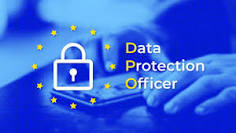STRATEGIES FOR COLLABORATION IN THE MANAGEMENT OF RESILIENCE IN A VOLATILE WORLD BETWEEN THE PUBLIC AND PRIVATE SECTOR AND SUSTAINABLE GROWTH
DOI:
https://doi.org/10.47820/recinter21.v2i2.13Keywords:
RESILIENCE , STRATEGIES , Artificial Intelligence, New technologies.Abstract
The title of the aforementioned article is disturbing for some people, for whom the mere mention of the subject and its use generates a series of doubts, fears, and anxiety, which at first glance could contribute to increasing distrust and mistakes in its use. Our brain acts in accordance with our experiences and experiences, unpleasant, shocking, pleasant, which helps us facilitate the respective approach. Everything new in itself is a curiosity that leads to perpetuating or amplifying existing biases. and concerns about the good or bad, fair, ethical and transparent or not of our decisions. New technologies pose significant risks to our way of acting and thinking, and the responsibility for our decision-making, whether timely or not, can contribute to our professional growth and development, as well as the future of new jobs, and our environmental sustainability, due to its energy footprint. We will have to solve this crossroads ourselves and the sooner we do it the better.
Downloads
References
ARCINIEGA, J. D. D. U. La resiliencia. Una nueva perspectiva en psicopatología del desarrollo. Revista de psicodidáctica, 2005.
BANCO MUNDIAL. Public-Private Partnerships Reference Guide Version 3.0. [S. l.]: Banco Mundial, 2017.
BOSTROM, N. Existential risk prevention as a global priority. Global Policy, v. 4, n. 1, p. 15-31, 2013. DOI: https://doi.org/10.1111/1758-5899.12002
COMFORT, L. K. Crisis management in hindsight: Cognition, communication, coordination, and control. Public Administration Review, v. 67, p. 189–192, 2007. DOI: https://doi.org/10.1111/j.1540-6210.2007.00827.x
CUTTER, S. L.; BARNES, L.; BERRY, M.; BURTON, C.; EVANS, C.; TATE, E.; WEBB, J. A place-based model for understanding community resilience to natural disasters. Global Environmental Change Part B: Environmental Hazards, v. 8, n. 1, p. 61–77, 2008.
DU SAUTOY, M. Programados para crear. Barcelona: Acantilado, 2020.
GRIMSEY, D.; LEWIS, M. K. Public private partnerships: the worldwide revolution in infrastructure provision and service delivery. [S. l.]: Edward Elgar Publishing, 2004. DOI: https://doi.org/10.4337/9781845423438.00013
HODGE, G. A.; GREVE, C. Public–private partnerships: An international performance review. Public Administration Review, v. 67, n. 3, p. 545-558, 2007. DOI: https://doi.org/10.1111/j.1540-6210.2007.00736.x
MILETI, D. S. Disasters by design: A reassessment of natural hazards in the United States. Washington, DC: Joseph Henry Pr, 1999.
MONTORO FERNÁNDEZ, E. Resiliencia emprendedora y crecimiento personal: construcción de un modelo para la educación inclusiva. [S. l.: s. n.], 2021.
OCDE - ORGANIZACIÓN PARA LA COOPERACIÓN Y EL DESARROLLO. Principles for Public Governance of Public-Private Partnerships. [S. l.]: OCDE, 2007.
UNISDR. Marco de Sendai para la Reducción del Riesgo de Desastres 2015-2030. Naciones Unidas: UNISDR, 2015.











